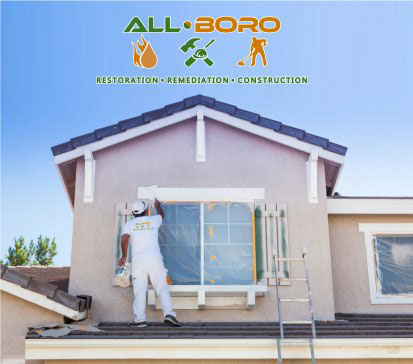Winter Weather Preparedness

Photo: ronniechua IStock
Winter storms can range from a moderate snow over a few hours to a blizzard with blinding, wind-driven snow that lasts for several days. Many winter storms are accompanied by dangerously low temperatures and sometimes by strong winds, icing, and freezing rain. One of the primary concerns is the winter weather’s ability to knock out heat, power and communications services to your home or office.
Watches and Warnings
Winter Storm Watch
This is issued by the National Weather Service when there is a potential for heavy snow or significant ice accumulations, usually at least 24 to 36 hours in advance.
Winter Storm Warning
This product is issued by the National Weather Service when a winter storm is producing or is forecast to produce heavy snow or significant ice accumulations.
Blizzard Warning
Issued for winter storms with sustained or frequent winds of 35 mph or higher with considerable falling and/or blowing snow that frequently reduces visibility to 1/4 of a mile or less. These conditions are expected to prevail for a minimum of 3 hours.
Winter Storms Home Preparedness Checklist
- Before winter approaches, make sure you have an emergency kit:
- Rock salt or more environmentally safe products to melt ice on walkways and driveways.
- Snow shovels and other snow removal equipment
- Sufficient heating fuel, like dry, seasoned wood for your fireplace or wood-burning stove
- Adequate clothing and blankets to keep you warm in case of an outage
- Flashlights and batteries
- Make a family emergency plan — Your family may not be together when disaster strikes, so it is important to know how you will contact one another, how you will get back together and what you will do in case of an emergency
- Minimize travel, but keep a disaster supplies kit in your vehicle
- Bring pets/companion animals inside during winter weather
- Move other animals or livestock to sheltered areas with non-frozen drinking water
During the Winter Storm
- Stay indoors during the storm
- Walk carefully on snowy, icy walkways
- Avoid overexertion when shoveling snow; overexertion can bring on a heart attack — a major cause of death in the winter
- If you must shovel snow, stretch before going outside
- Keep dry and change wet clothing frequently to prevent a loss of body heat (wet clothing loses all its insulating value and transmits heat rapidly)
- Watch for signs of frostbite: loss of feeling and white or pale appearance in extremities such as fingers, toes, ear lobes and the tip of the nose. If symptoms are detected, get medical help immediately
- Watch for signs of hypothermia: uncontrollable shivering, memory loss, disorientation, incoherence, slurred speech, drowsiness, and apparent exhaustion. If symptoms of hypothermia are detected, get the victim to a warm location, remove wet clothing, warm the center of the body first and give warm, non-alcoholic beverages if the victim is conscious. Get medical help as soon as possible
- Drive only if it is necessary. If you must drive travel in the day, don’t travel alone, keep others informed of your schedule, stay on main roads, and avoid back road shortcuts
- Let someone know your destination, your route and when you expect to arrive. If your car gets stuck along the way, help can be sent along your predetermined route
- Maintain ventilation when using kerosene heaters to avoid build-up of toxic fumes
- Refuel kerosene heaters outside and keep them at least three feet from flammable objects
- Conserve fuel, if necessary, by keeping your residence cooler than normal. Temporarily close off heat to some rooms
- If you will be going away during cold weather, leave the heat on in your home, set to a temperature no lower than 60°F
- Leave water slightly running to avoid frozen pipes, but if it does occur, call a professional company to help.
And as always and most important don’t forget to check on your older family and neighbors. This time of year can be especially hard and dangerous on them.
recent posts

All Boro Inc. Celebrates Successful Partnership at Options’ Second Murder Mystery Event
Many business owners, Facility Managers and Property Managers wonder when the best time of year is to schedule painting projects. Painting can be done at nearly any time during the year (during the right conditions), spring is arguably the best time of year to take care of outdoor projects; interior projects could be done year-round.

CLEANING YOUR TRASH CHUTE CAN SAVE YOU MONEY!
Trash collection can be a tough job, especially when you live in a bigger area; however, trash chutes help you to make that task easy and hassle-free. Trash chutes are usually found in apartments, high-rise buildings, and hospitals; therefore, trash chute cleaning is very important. If neglected, chutes can be hazardous.

Four Reasons to Paint Your Exterior
Many business owners, Facility Managers and Property Managers wonder when the best time of year is to schedule painting projects. Painting can be done at nearly any time during the year (during the right conditions), spring is arguably the best time of year to take care of outdoor projects; interior projects could be done year-round.
